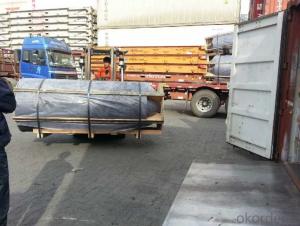When we talk about the backbone of the steel industry, graphite electrodes come to mind. These cylindrical wonders are not just any ordinary graphite products; they are the unsung heroes of the metallurgical world. Made from high-quality graphite, they play a crucial role in the electric arc furnaces (EAFs) used for producing steel. But what exactly goes into creating these high-quality graphite electrodes? Let’s dive into the raw materials and the process behind these marvels of engineering.
First and foremost, the raw material for graphite electrodes is natural flake graphite or synthetic graphite. Natural flake graphite is sourced from the earth, mined from the ground, and is known for its purity and crystalline structure. On the other hand, synthetic graphite is man-made, produced through a process of heating petroleum coke or coal tar pitch to extreme temperatures. Both types have their own set of advantages, but when it comes to creating high-quality electrodes, the choice of raw material can make all the difference.
The journey of graphite from raw material to electrode begins with the purification process. This step is essential to remove any impurities that might affect the electrode’s performance. For natural flake graphite, it involves a series of physical and chemical treatments to ensure that the final product is as pure as possible. Synthetic graphite, being already quite pure, undergoes a similar process but with less intensity.
Once the purification is complete, the next step is the production of expandable graphite. This is achieved by treating the purified graphite with oxidizing agents, which create a structure that can expand rapidly when heated. This expansion is a key feature of graphite electrodes, allowing them to vibrate and thus maintain the electric arc necessary for steel production.
The expanded graphite is then mixed with a binder, which is typically a phenolic or furan resin. The binder serves to hold the graphite particles together, ensuring the structural integrity of the electrode. This mixture is then subjected to a molding process, where it is compressed into the desired shape and size.
After molding, the green electrodes, as they are called at this stage, are cured in an oven. This curing process hardens the binder and strengthens the overall structure of the electrode. It’s a bit like baking a cake; you need the right temperature and time to ensure that it comes out just right.
The final step in the production of graphite electrodes is the graphitization. This is where the electrodes are heated to temperatures above 2,500 degrees Celsius in a graphitization furnace. At these extreme temperatures, the carbon atoms in the electrode rearrange themselves into a more ordered, crystalline structure. This step is what gives the electrodes their high electrical conductivity and thermal shock resistance, making them ideal for use in EAFs.
But the journey doesn’t end there. Once the electrodes have been graphitized, they undergo a series of quality control checks to ensure that they meet the required standards. This includes testing for density, electrical resistivity, and mechanical strength. Only the electrodes that pass these tests make it to the steel mills, where they are put to work in the production of steel.
It’s fascinating to think about the process that goes into creating these graphite electrodes, and it’s not just about the raw materials. It’s about the craftsmanship, the attention to detail, and the dedication of the people behind the scenes who make it all happen. These unsung heroes of the steel industry deserve recognition for their contribution to the production of one of the world’s most essential materials.
In a world that’s constantly evolving, the demand for high-quality graphite electrodes is only going to increase. As we continue to push the boundaries of what’s possible in steel production, it’s the raw materials and the people behind the scenes that will make it all possible. So, the next time you see a steel beam or a structure made of steel, remember the humble graphite electrode that played its part in making it all happen.
The raw materials behind high-quality graphite electrodes are more than just the foundation of the steel industry; they are the embodiment of human ingenuity and the relentless pursuit of excellence. As we continue to innovate and improve, let’s not forget to appreciate the humble beginnings of these cylindrical giants that power the furnaces and shape our modern world.

